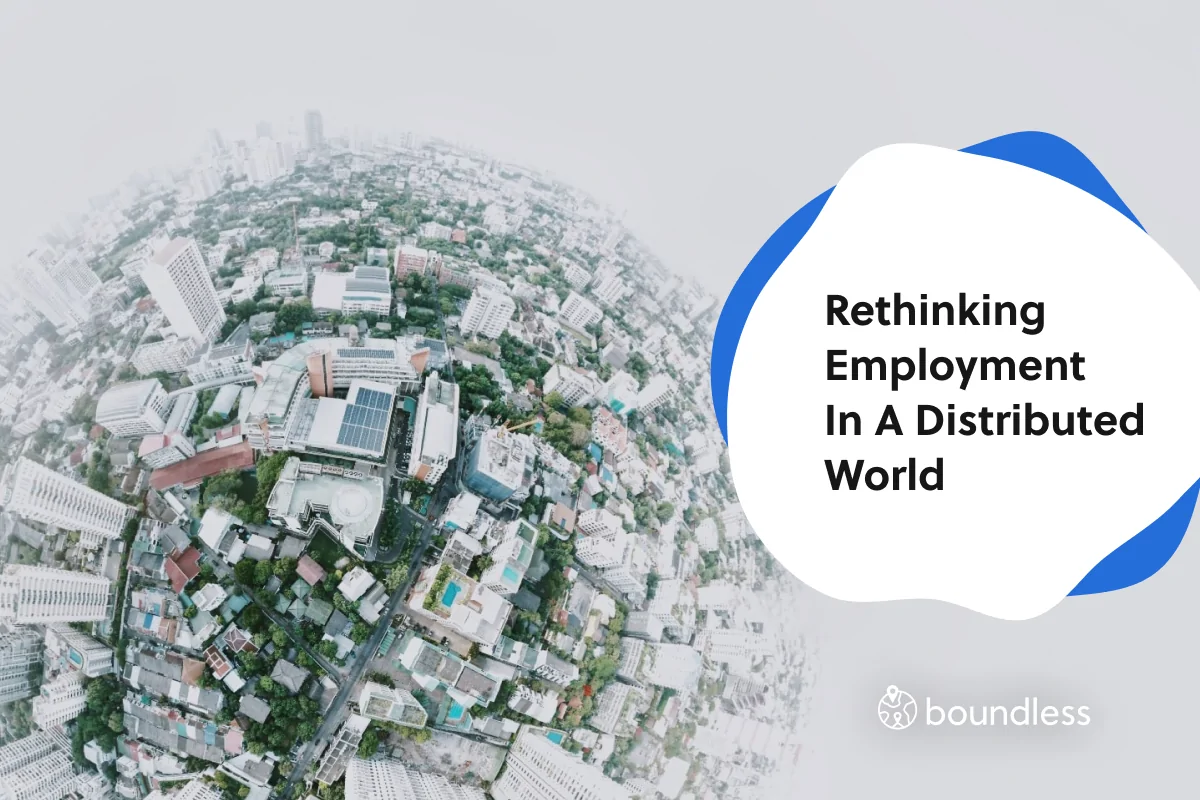What is HR Compliance?
‘HR compliance’ refers to the practice of ensuring an organisation's human resources (HR) policies, procedures, and practices (i.e. time off, benefits, contracts, terminations, etc) are in accordance with the relevant local laws, regulations, and guidelines. It encompasses the steps and measures taken by a given organisation’s HR team as a whole to act in accordance of legal and tax regulations related to employment and workforce management.
This can be particularly difficult to execute in a country where a company doesn’t have legal presence, which is why many employers would work with an Employer of Record (EOR) that can help with aspects of human resource compliance in overseas territories.
What areas fall under HR compliance?
When we talk about compliance, this typically encompasses a number of things. For example, appropriate employment classification, health and safety regulations, correct entity setup, tax obligations, termination procedures, leave policies, and various other aspects that either directly or indirectly influence employment.
Generally speaking, compliance refers to the practice of adhering to laws, regulations, standards, and ethical practices that apply to an organisation's operations within a given country. Overlooking compliance can result in legal penalties, financial loss, and overall damage to the company’s reputation, which is why it’s so important to be proactive about understanding the local requirements at the point of setting up company operations.
However, not all of these areas would fall under the HR Compliance umbrella or be under the HR department’s careful guardianship. Areas that do fall under HR Compliance include things like employment contracts, worker classification, occupational health and safety, breaks and right to disconnect, company policies and others.
Basic legal requirements
Staying informed about fundamental local labour laws is paramount for any organisation with full-time workers. This might include anything from having compliant contracts, which are updated regularly as new changes come in to maintaining accurate and up-to-date records and updating internal HR policies.
All businesses are responsible for ensuring their employment practices do not discriminate against employees or job applicants based on general protections, such as race, gender, age, religion, disability, or national origin. Maintaining compliance in these areas typically falls to the HR team.
Hiring, firing, and compensation
Human resources representatives are responsible for developing and implementing HR policies and procedures related to hiring, termination, and compensation and wages. This includes remaining compliant with regulations stipulating minimum wage, overtime pay, meal and rest breaks, and other wage and work-hour requirements. Navigating the end of an employment relationship is never easy, so understanding the requirements of different types of terminations, or for what reasons a company may be able to terminate an employee is extremely important.
Ending employment is an area that can be incredibly complex and where extreme caution and care are not just recommended but necessary. In most EU countries, a rigorous procedure needs to be followed. In many countries there is a specific list of reasons for termination, of which many require substantial evidence and documentation. This is where adhering 100% to ALL guidelines is essential as a company’s actions will be looked at very carefully by authorities to ensure it followed the procedure carefully and have sufficient supporting documentation and evidence.
Employees who feel they’ve been wrongfully terminated due to discriminatory practices or unfair procedure may take legal action and be eligible for compensation or even reinstatement to their jobs.
Workplace safety
HR teams help ensure a given organisation complies with local health and safety regulations to maintain a safe and healthy work environment. Many times, these compliance concerns also apply to remote work or 'work from anywhere' schemes for employees who may come to the office less often (or not at all).
Every country has regulations regarding what constitutes a safe workplace. These determine many areas including optimal office temperature, desk ergonomics, trainings required, safety protocols, tripping hazards, equipment storage.
However, in recent years, employers have had to quickly re-assess those in the home office context, where they can often be more challenging to control. Many countries already had some regulations to guide them, while others have been recently making updates to include remote working.
It’s important to note that when we talk about workplace safety both physical and mental health have to be considered. According to a recent report by the The Chartered Institute of Personnel and Development, workplace absenteeism is soaring since the pandemic. So while trip hazards, good posture, and other aspects of work that impact the physical health of an employee have to be considered, mental health and work related stress should also need to be taken into consideration. Much of the increase of the absenteeism, in particular the long term absences is due to work related stress or mental health.
Health and Safety can be a complex area, especially if dealing with multiple jurisdictions with different requirements. While HR teams are the ones that carry the responsibility for good health and safety practices, finding a local partner to guide them on local regulations, trainings, risk assessments, ergonomic set-up and mental health supports can make things a lot easier for them and they should consider doing that.
Employee classification, benefits, and rights
A major part of HR compliance is ensuring hired workers are not misclassified, such as being hired as contractors rather than full-time, taxable employees. HR teams also ensure workers receive all legally mandated and company-offered benefits, including paid time off (PTO), healthcare coverage, and other portions of benefits packages, as well as guarantee all employee rights are protected.
When it comes to benefits, navigating them can get complicated. There are different benefits which employers are required to facilitate, loosely grouped into government-provided and government-mandated categories. This means that some benefits or payments are provided by governments or social security and others must be provided or paid by the employer.
For example, in the UK and Australia, providing employer contributions to a pension scheme is mandatory. In Ireland, on the other hand, all employers with more than five employees must offer access to a pension scheme, but they don't have to make contributions (for now).
Paid time-off benefits — such as holidays, maternity/paternity leave and medical leave — all exist as benefits in one form or another in most countries but the specifics vary significantly, especially when it comes to who pays them. Netherlands is a notable example in relation to sick leave, where employees are entitled to up to two years sick leave paid at a minimum of 70% of their salary paid by the employer.
In every country, employees have certain rights regarding their break times during work hours and between consecutive workdays. Specifics often vary — such as whether lunch breaks are included in calculating weekly hours (New Zealand, Australia, Germany) or not (Denmark, the Netherlands) — but break rights are statutory nevertheless. Employees working from their homes retain their break rights, and employers have to make sure those breaks are taken and respected.
A step further from that are right to disconnect regulations, which recognises an employee's right to be able to disengage from work and refrain from engaging in work-related communications outside normal working hours. This can mean employers are prohibited from contacting employees out of hours.
For more information on the specifics of worker classification requirements and employee rights, check out our list of country guides.
Ensure HR compliance with Boundless
Non-compliance with employment regulations can result in legal disputes, fines, and penalties. It can also seriously damage the reputation of an employer. As such, HR compliance is essential for mitigating risks, maintaining a positive work environment, and fostering trust between your organisation and your workers. If you are interested in learning how to master HR compliance for your remote teams, watch this on-demand webinar.
Boundless can help you remain HR compliant no matter your business or employees’ location. Speak with one of our experts to get started.


